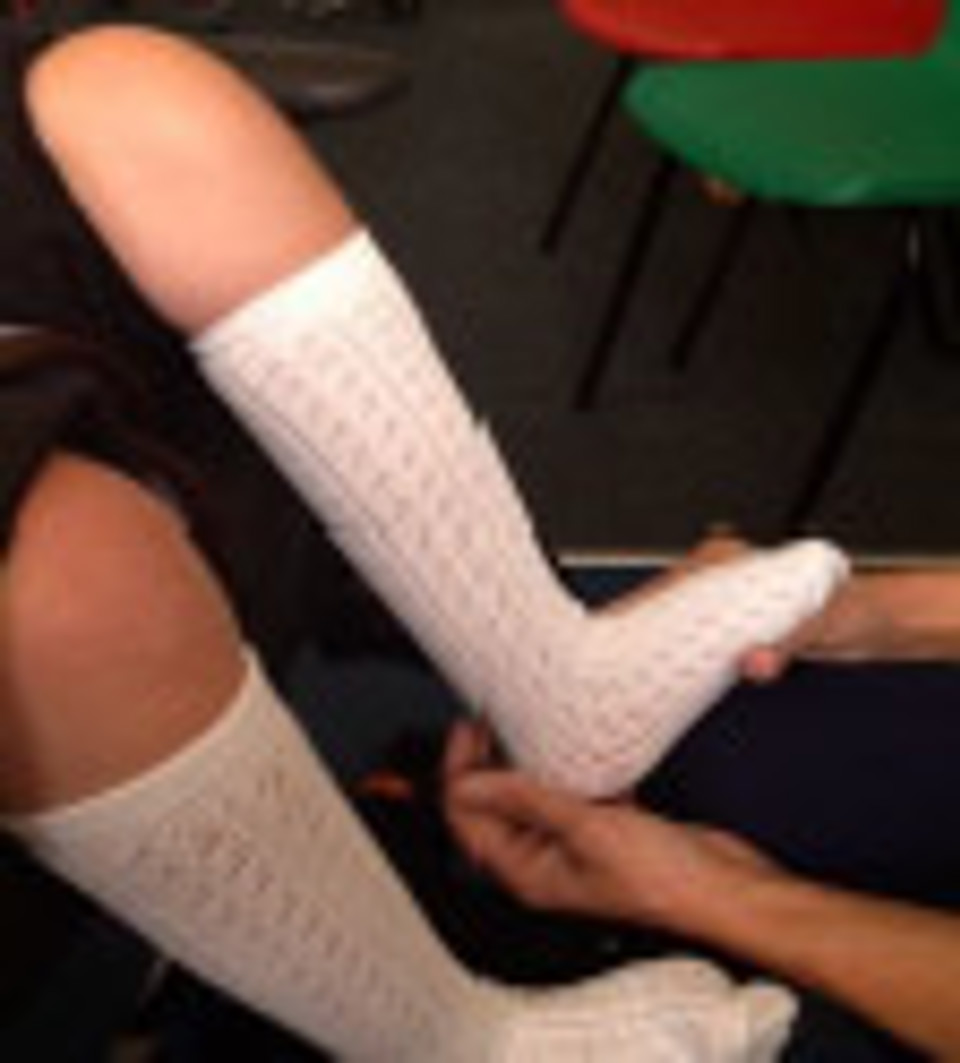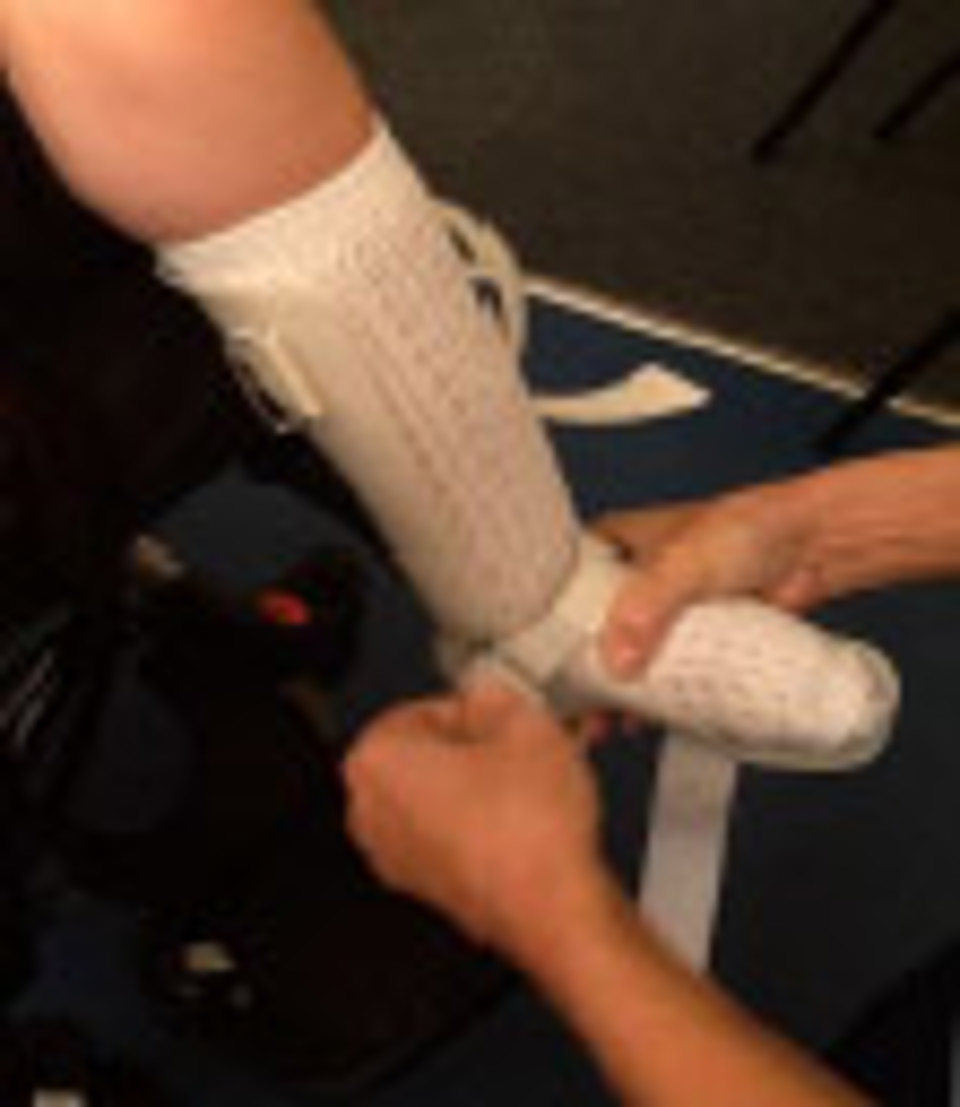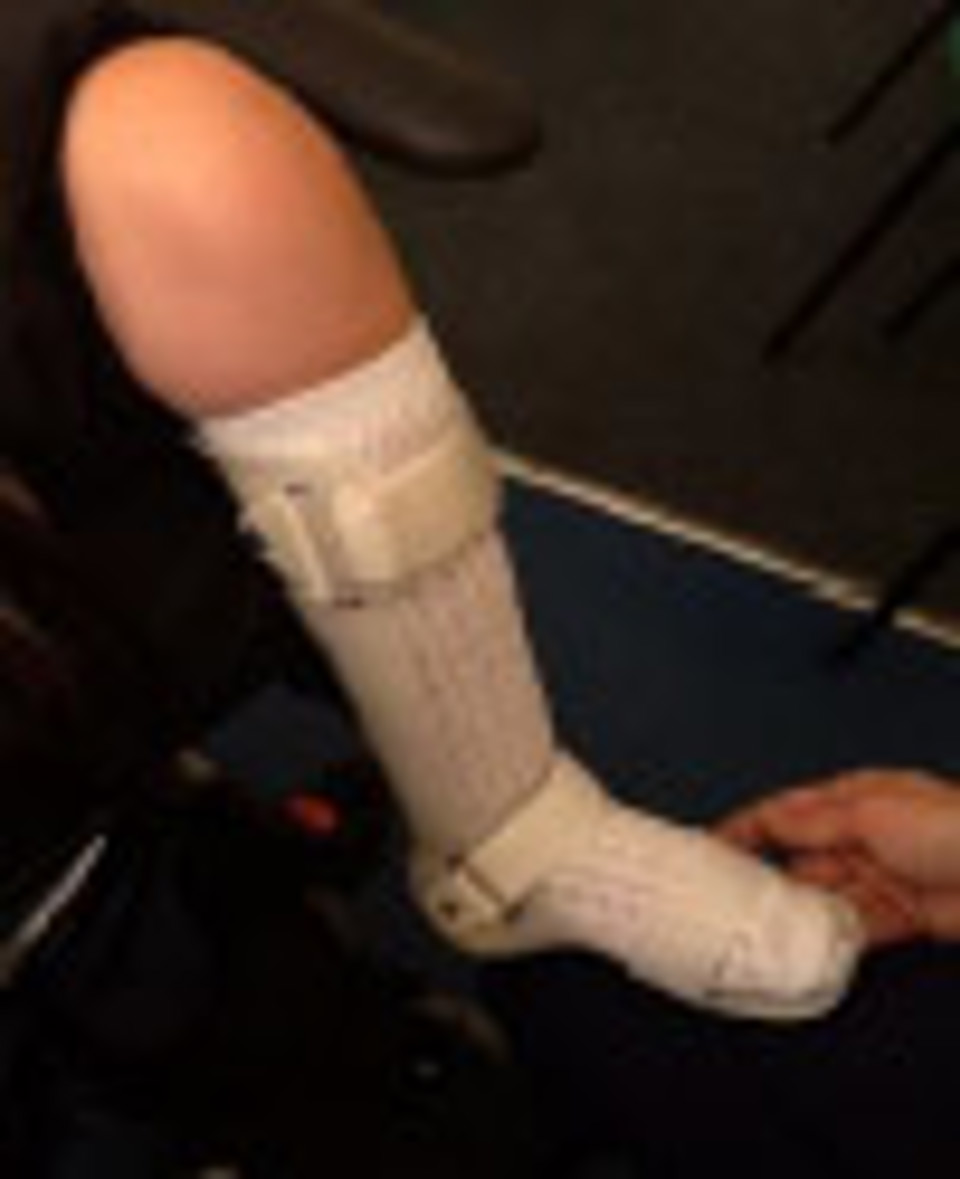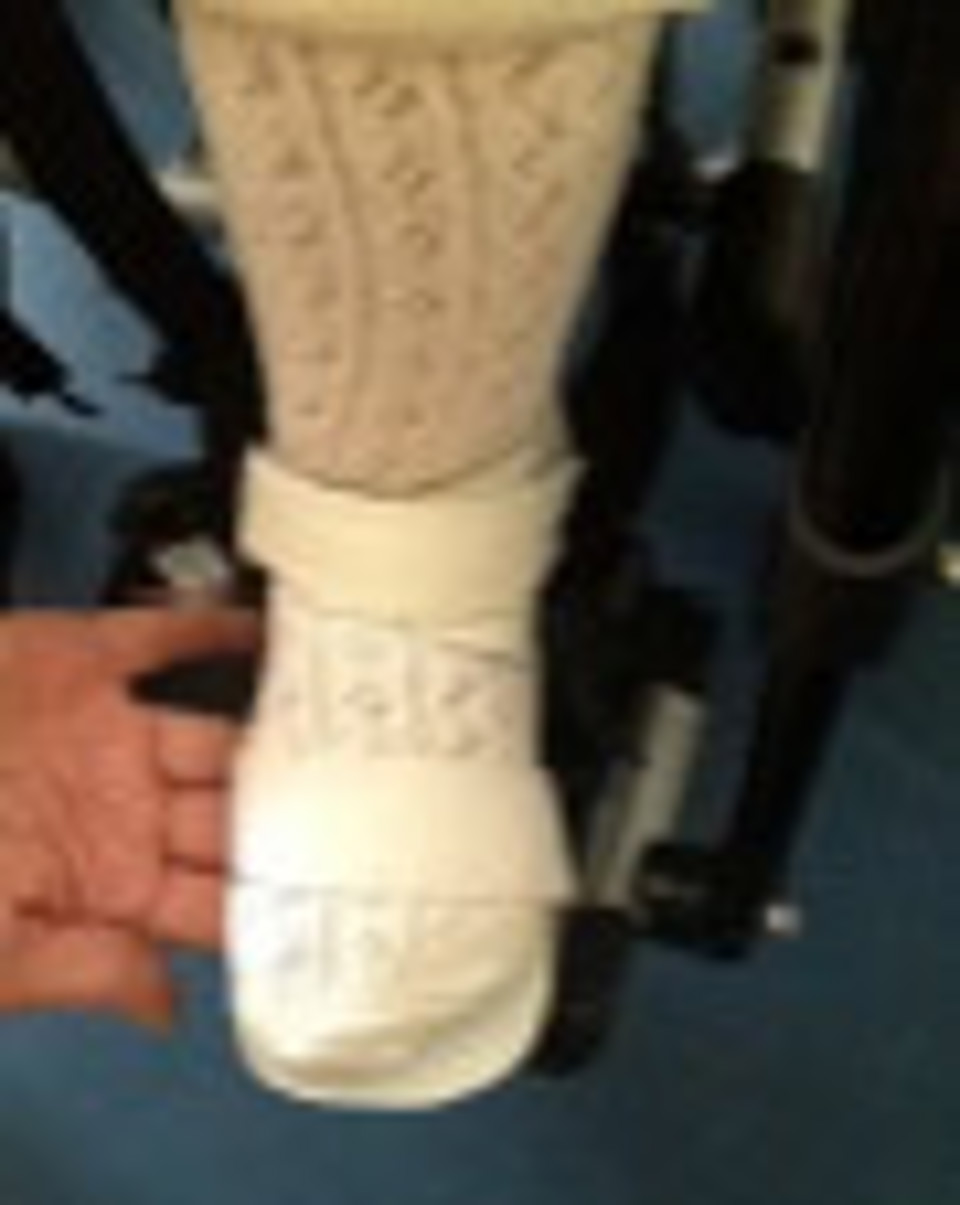
Step 1. Prepare the leg
- Put on a knee high plain cotton sock.
- Smooth out any wrinkles.
- Bend the knee and hip.
- (Never put the splint on a straight leg)
- Stretch the ankle muscles by pulling down on the heel and pushing up the toes.

Step 2. Place foot in splint
- With one hand keep the knee and ankle bent.
- With the other hand, hold the splint with straps open.
- Start with the heel firmly touching the toe plate of the splint.
- Slide the heel all the way back into the splint.

Step 3. Fasten the straps
- Keep the heel firmly in the splint with your thumb.
- Thread the ankle strap through the loop and fasten it.
- Fasten the top strap.
- Fasten the toe strap if applicable.
- Pull the sock out from under the ankle strap to take out any wrinkles.


Step 4. Stop and check
1. The sock has no wrinkles
2. The straps are done up to the proper tightness. (Ask your orthotist to mark the proper strap tightness.)
3. There is no space behind the heel.
4. The tips of the toes are just inside the edge of the toe plate
The splint must pass all these checks to be comfortable and prevent skin pressure problems. If the splint ‘fails’ these checks, take it off and start again at step 1.
Please stop using the splint and if you notice any of the following:
- Pressure areas, which is redness that does not go away in 20-30 minutes.
- Swelling, pain, rash, blister or skin breakdown.
- Broken (missing parts) of splint.
When will a new splint be needed?
- When the child’s toes get to the edge of the splint.
- More than 3 fingers width below the knee.
- If discomfort or redness begins in new places.
Further advice
If you have any problems with splints not fitting correctly or getting too small please contact your Orthotic department or your physiotherapist.
Orthotic Department contacts
Queen Margaret Hospital: 01383 674128
Victoria Hospital : 01592 643355 Ext 28345
Children and Young People’s Physiotherapy service
Fife.paedsphysioreferrals@nhs.scot
Accessible formats
If you require this information in a community language or alternative format such as Braille, audio, large print, BSL, or Easy Read, please contact the Equality and Human Rights Team at: email: fife.EqualityandHumanRights@nhs.scot or phone 01592 729130. For people with a hearing or verbal impairment you can also contact the team through the NHS Fife SMS text service number on 07805800005.





